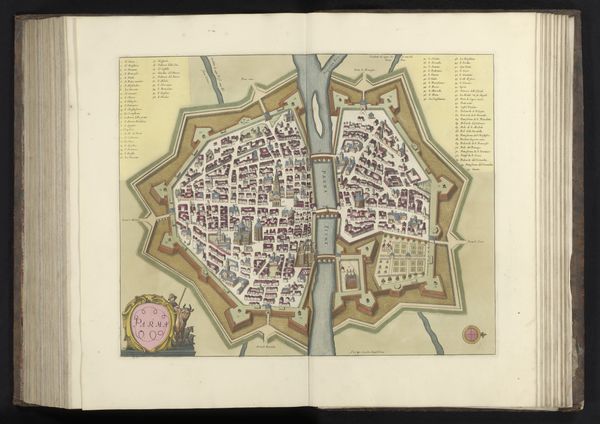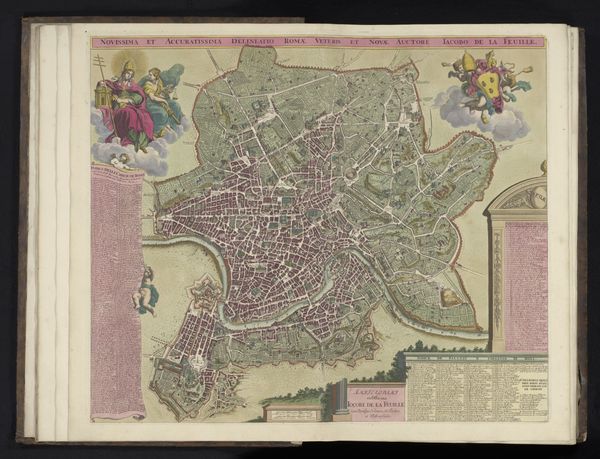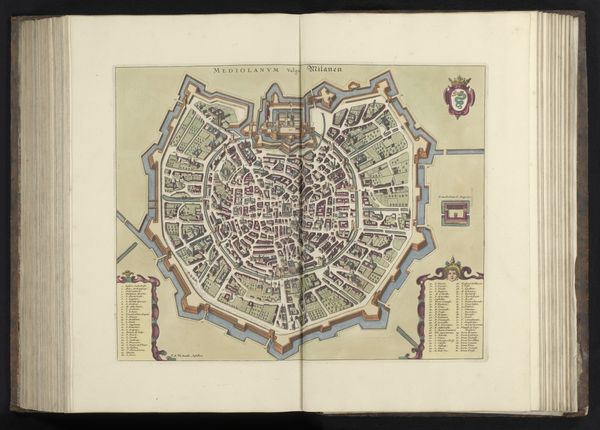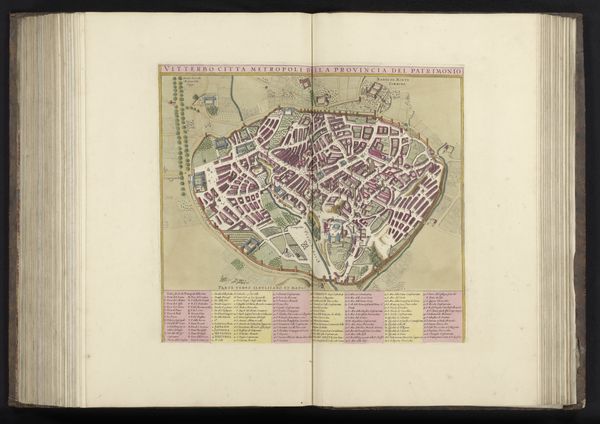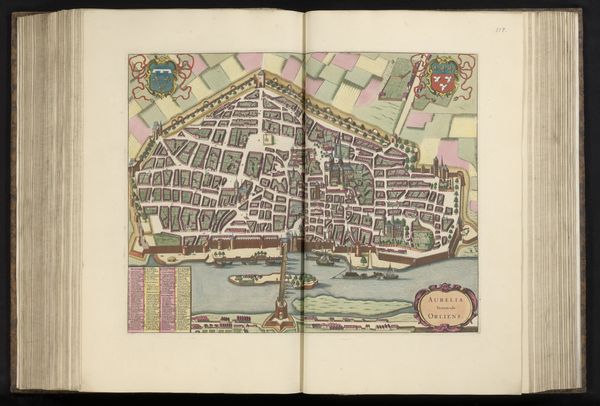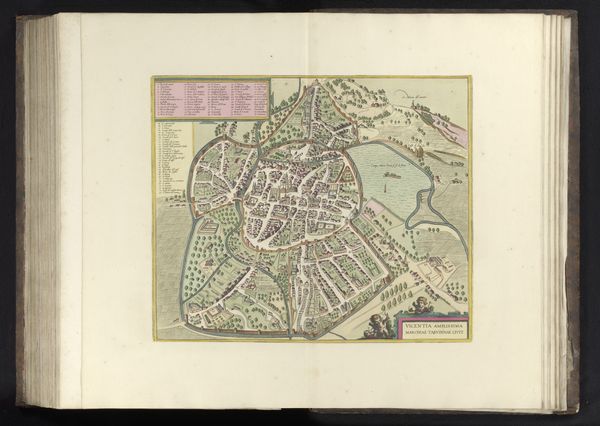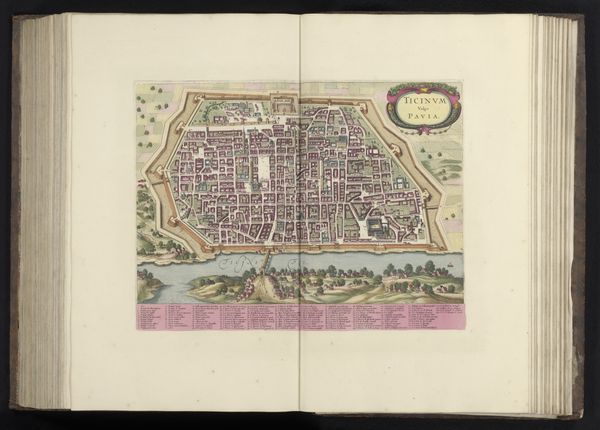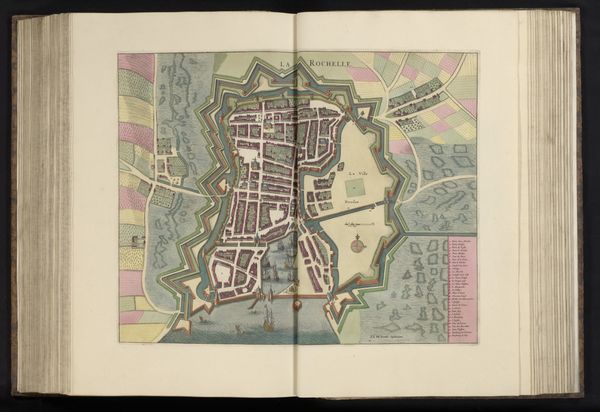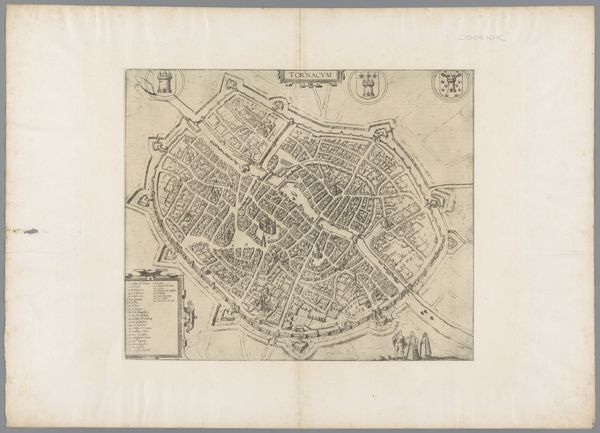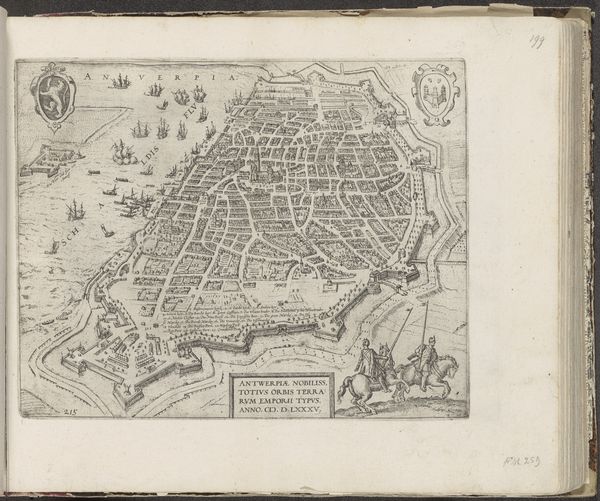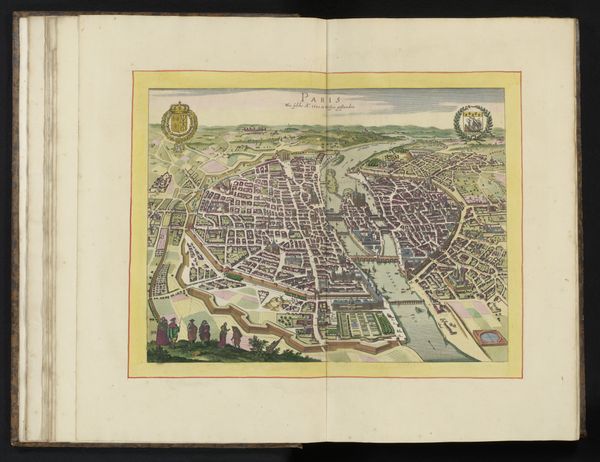
drawing, paper, watercolor, ink
#
drawing
#
baroque
#
perspective
#
paper
#
watercolor
#
ink
#
cityscape
Dimensions: height 393 mm, width 509 mm
Copyright: Rijks Museum: Open Domain
Editor: So this detailed drawing, "Gezicht op Piacenza in vogelvluchtperspectief," is from around 1600-1717, rendered in ink and watercolor. It’s anonymous and depicts a bird’s eye view of the city. I’m struck by how fortified it looks, but also by the miniaturization. What historical or cultural meaning do you read into the map, beyond its representational qualities? Curator: Look closely at those fortifications; their shape alone tells a story. See how they are star-shaped? This recalls a very particular period when military engineering became a high art. The star fort became a symbol of power and defense. It’s not just about seeing Piacenza; it is about understanding its position within a network of power and strategy. How might this symbol resonate with ideas about the protection of knowledge or even cultural identity within the city walls? Editor: That makes a lot of sense! The star shape does project a certain authority. The visual language definitely speaks to power and control. I hadn't thought of it in terms of safeguarding cultural memory before. Curator: Precisely. The map uses not only geography, but also symbolic geometry. It's speaking on multiple levels, attempting to immortalize both the physical space and its ideological underpinnings. Think about the function of a map in general. What does it mean to claim a space visually? Editor: It's like documenting existence. What has been, still exists within the image, offering insights for our world and others that come after. It almost feels sacred now, knowing what all this conveys. Curator: Indeed. By exploring such images, we can unearth the layered memories and enduring values embedded within them. Editor: It’s amazing how much visual information can reveal when you know what to look for. Curator: That’s the true gift of iconography—recognizing the voices embedded within the image.
Comments
No comments
Be the first to comment and join the conversation on the ultimate creative platform.
